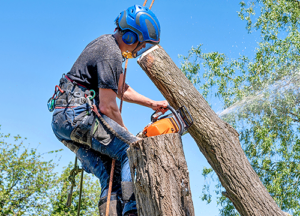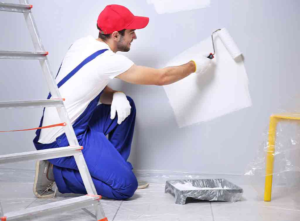Pests can damage plants, crops and personal items. They may sting, bite or gnaw, like bed bugs, cockroaches and mice. Some carry and spread disease, such as cockroaches, fleas, and cluster flies.
Action thresholds – levels of harm deemed unacceptable – have been established for many pests. Control options include prevention, suppression and eradication. Contact Pest Control Bakersfield CA now!

Preventing pests before they invade your home or business is the best way to save money and prevent health and safety issues. Pest prevention is not a complicated process; it starts with identifying the problem and taking appropriate actions. A common pest, for example, is the earwig; it enters homes and buildings to feed on nectar and plant juices, but it can also cause damage by boring into materials, causing rot, attracting predators or introducing disease-causing pathogens.
Many factors influence pest populations, including weather conditions, food availability and shelter. Weather, especially temperature and rainfall, can directly affect pests by killing or suppressing them or by reducing their ability to reproduce. The presence of natural predators and parasites often reduces the number of pests, as do the activities of birds, mammals, reptiles, amphibians and fish.
Other factors that may contribute to pest problems include the availability of water, roosting sites and places to hide, the quality of host plants and overwintering areas, and the presence of limiting environmental features such as mountains, lakes or large bodies of water that restrict the movement of pests. The use of natural barriers and habitat management can also help control pests.
The simplest way to keep pests out is to block points of entry. Pests exploit even the smallest cracks and openings, so seal all cracks and holes with caulk or other quality sealants. Install door sweeps and weather stripping to prevent pests from entering through gaps under doors. Keep garbage cans tightly sealed and remove them on a regular basis, as pests often enter buildings to access their food sources. Keep landscaping away from buildings to avoid providing a bridge for pests, and fix leaky pipes and faucets.
Cleaning counters, tables and floors regularly keeps them free of crumbs and other attractants that can entice pests to invade. In addition, regularly cleaning outdoor toys and furniture prevents them from bringing in pests such as fruit flies and fleas. Always store foods in the refrigerator, and dispose of waste material properly to discourage rodents and other pests. Keep all chemical products, even organic insecticides, out of reach of children and pets, as some are toxic and may irritate sensitive skin, eyes or respiratory systems. Always read product labels and follow instructions carefully, and only use products registered for the pest you are trying to control.
Suppression
Pests are undesirable organisms, ranging from bacteria to fungus, nematodes, weeds, insects and vertebrates that cause damage or interfere with human activities. They may displace native species, devalue crops, disrupt ecosystems, and harm human health. Pest control is the process of regulating these organisms to reduce their detrimental effects. Pests can be controlled using natural, organic, or chemical means.
The three fundamental goals of pest control are prevention, suppression, and eradication. Preventive methods stop a pest infestation from occurring, whereas suppression limits pest activity and population growth to an acceptable level. Eradication destroys the pest and its eggs. Control strategies are selected based on the kind and amount of pest control required.
Monitoring pests is the key to determining whether or not control is needed. Scouting and trapping are important tools for identifying pests. Monitoring also includes checking for factors that might lead to a pest problem, such as water levels and temperature. It can help determine when a pest population will reach a threshold that might call for action.
Many pests are limited in their ability to thrive by the availability of food and water, shelter, overwintering areas, and other environmental conditions. In addition, features such as mountains and large bodies of water can restrict the movement of some pests.
Some pests such as mice and rats can enter houses, where they contaminate food, damage walls, furniture and wires, and spread diseases like plague, hantavirus pulmonary syndrome, leptospirosis, Salmonella and others. They can even trigger asthma attacks in some people. Cockroaches and ants can also contaminate food, damage wood, and trigger allergic reactions in some people.
Physical and biological controls are the first steps in controlling pests that are difficult to prevent or kill. They include using baits, mating disruption, biological control, and changing irrigation practices. These approaches are often used in combination with other control methods. Chemicals are usually the last resort for pest control and are applied only when necessary to limit their use and impact on humans and the environment. They may be sprayed, drenched, or otherwise injected into the soil or onto the surface of plants.
Eradication
Pests damage property, plants, food and animals. They also cause diseases that can harm people and pets. This makes pest control important for public health and safety, safeguarding crops and food supplies, preserving property, and maintaining ecological balance.
Most of us think of rodents, ants, beetles, flies and mosquitoes as pests. However, any living creature that causes a nuisance or is damaging can be considered a pest. Pests may bite, sting, cause allergic reactions and cause illness, like fleas, cockroaches and mice. They may stain or contaminate food, damage fabrics and furniture, or destroy personal items, such as clothes moths, bed bugs and carpet beetles. Pests can invade homes and buildings through cracks, crevices and holes, or they may enter through windows, doors or other openings.
Pesticides are chemicals that kill pests or prevent them from reproducing. They are used to treat both indoor and outdoor spaces. Some pesticides can have toxic effects on humans, pets and wildlife if misused or applied incorrectly. Pesticides can also fail to control pests if they are resistant or if the insecticide is not used at a time when the pest is in the correct life cycle stage for it to be killed.
Biological pest control uses natural organisms to control pests, such as parasitism, predators and herbivory. It also includes methods of genetic modification. Biological methods include the release of natural enemies, such as bacteria, viruses, nematodes and phytoplasmas; introduction of new species that are more resistant to disease or have desirable traits, such as tolerance to certain chemicals; and alteration of a plant or animal’s genes to make it less appealing to pests.
You can reduce the number of pests around your home and garden by keeping the environment clean, removing scraps of food and securing garbage cans. Eliminate hiding places for pests by trimming back overgrown plants and storing firewood properly. Fix leaky faucets, remove standing water and puddles, and seal any cracks or holes that pests can use to enter your home.
IPM
Integrated Pest Management (IPM) is an ecosystem-based approach to managing pests that includes prevention, monitoring, identification, and treatment. It seeks to reduce the use of pesticides and minimize damage to other organisms and to the environment. IPM also emphasizes the use of cultural, biological, physical, and educational methods to manage pest populations to acceptable levels. The UC IPM program began over fifty years ago and has produced an extensive library of pest management guidelines for all crops.
The first step is to monitor and scout on a regular basis, taking into account the season, weather, and plant health. This allows you to determine the types and levels of pests and to accurately identify them. It also helps you to evaluate economic or aesthetic injury thresholds – the level of pest presence below which no action is required.
If monitoring, scouting and identification indicate that pest control is necessary, you then decide on the most effective and least risky treatment strategy. This might include preventive measures, such as mowing or trapping, and may involve the release of natural enemies such as predators, parasitoids, and pathogens. If these methods are ineffective, or if the pest population has risen above your threshold, then you might need to consider more extreme measures such as spraying with a highly targeted chemical.
Remember to continuously reevaluate your plan, and make adjustments as needed. The climate changes, your landscape plants grow, soil conditions change and other factors can affect the interaction between your plants and pests. This continuous reevaluation allows you to stay ahead of pest problems rather than constantly playing catch-up with them.
Keeping a journal of your observations can help you track and analyze your IPM program. This can be especially useful for home gardeners who are not able to visit their gardens as often as professional growers, and it can help them develop a more consistent IPM program that is tailored to their own gardening situation. You can also get regionally specific advice, news and announcements from the USDA IPM Centers(link is external).






